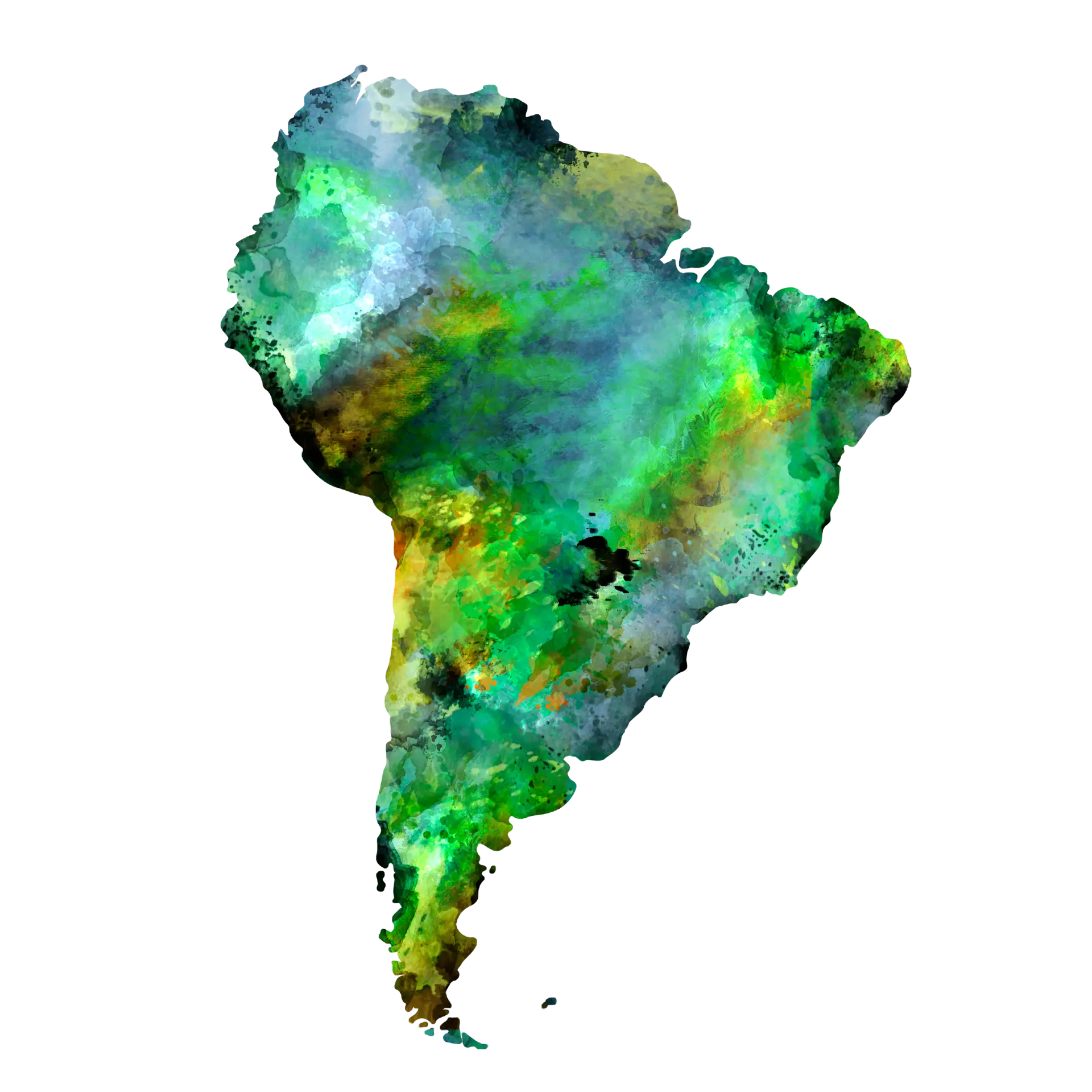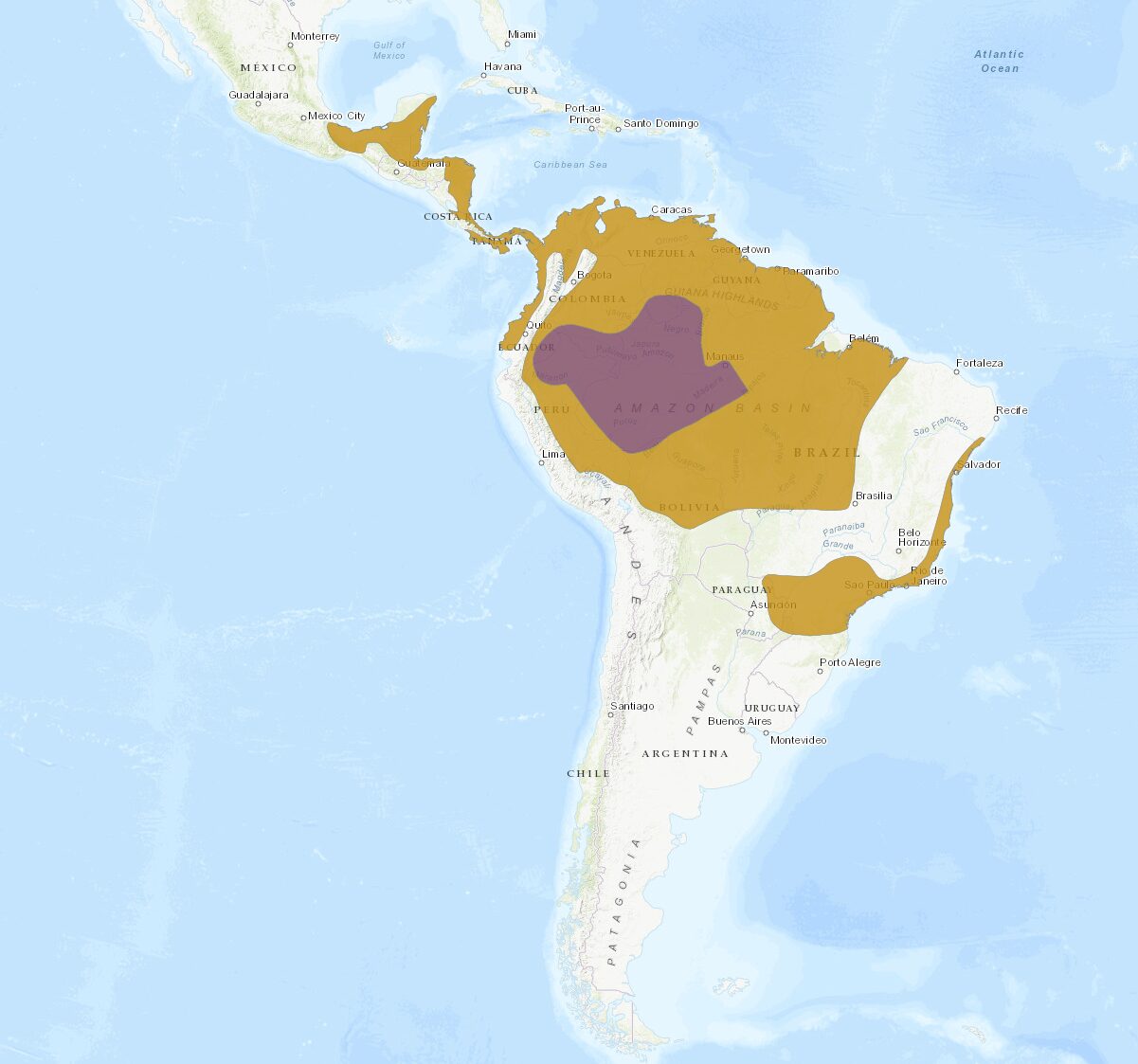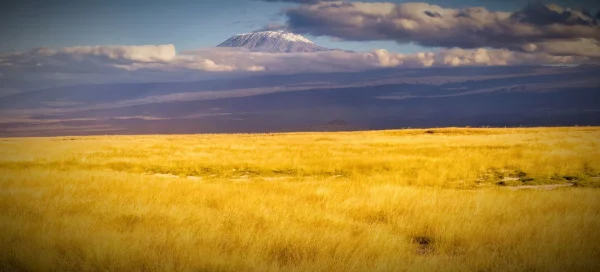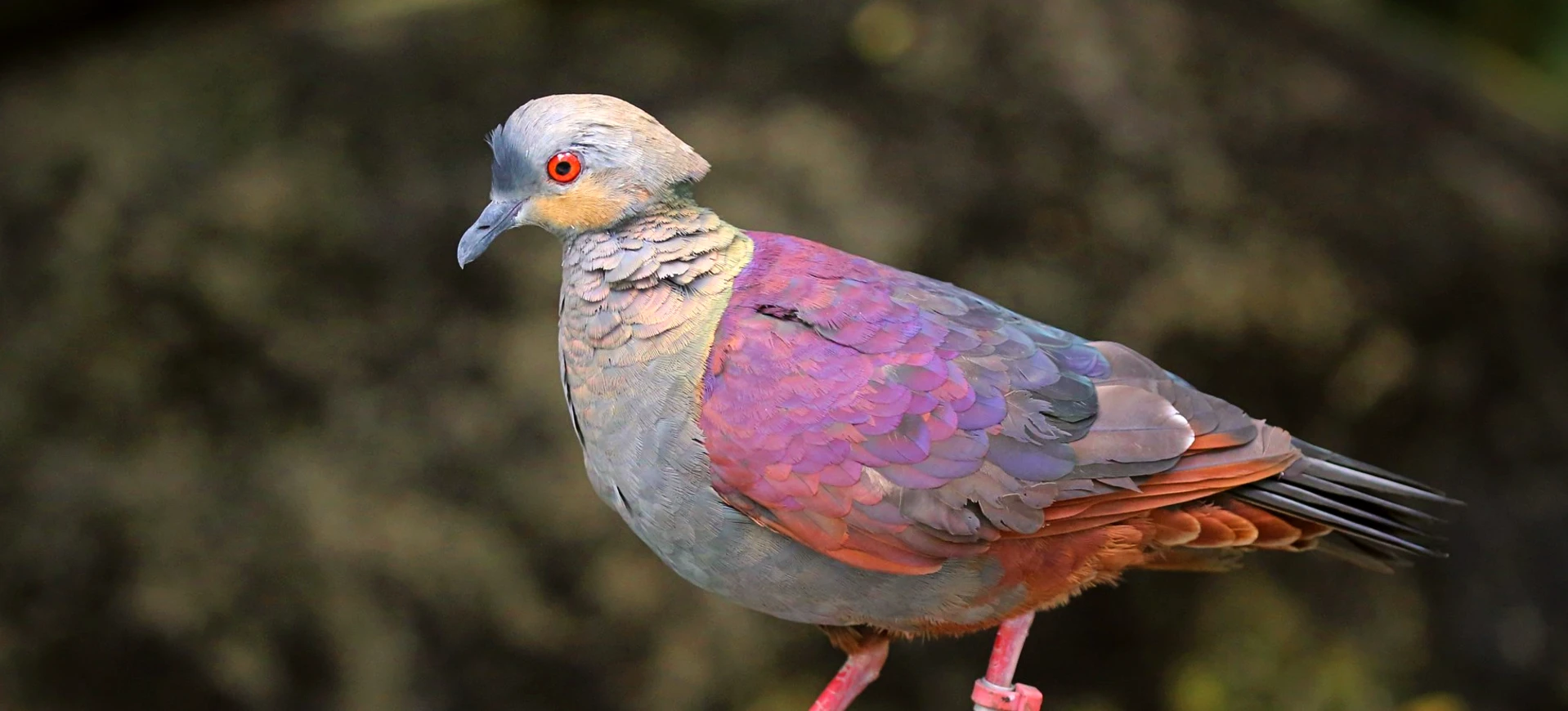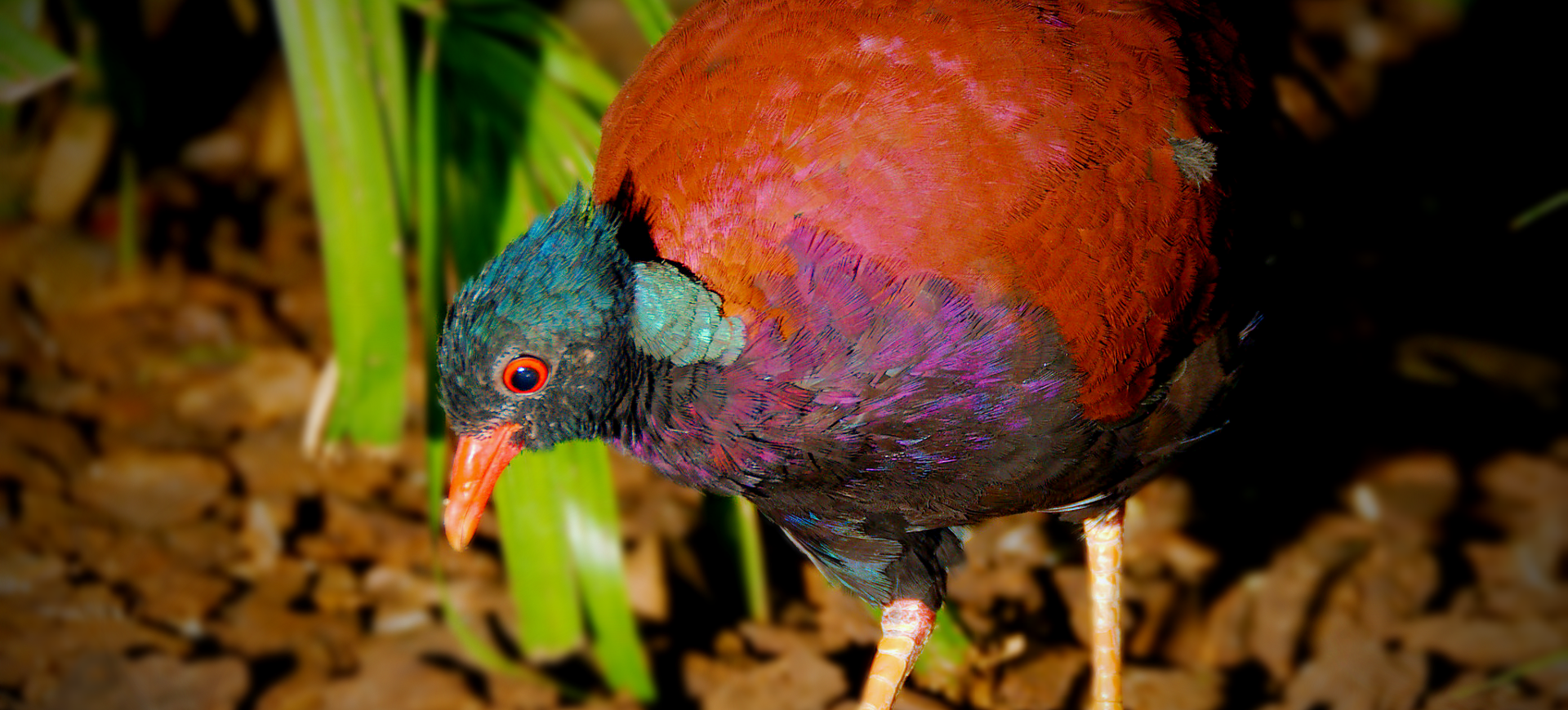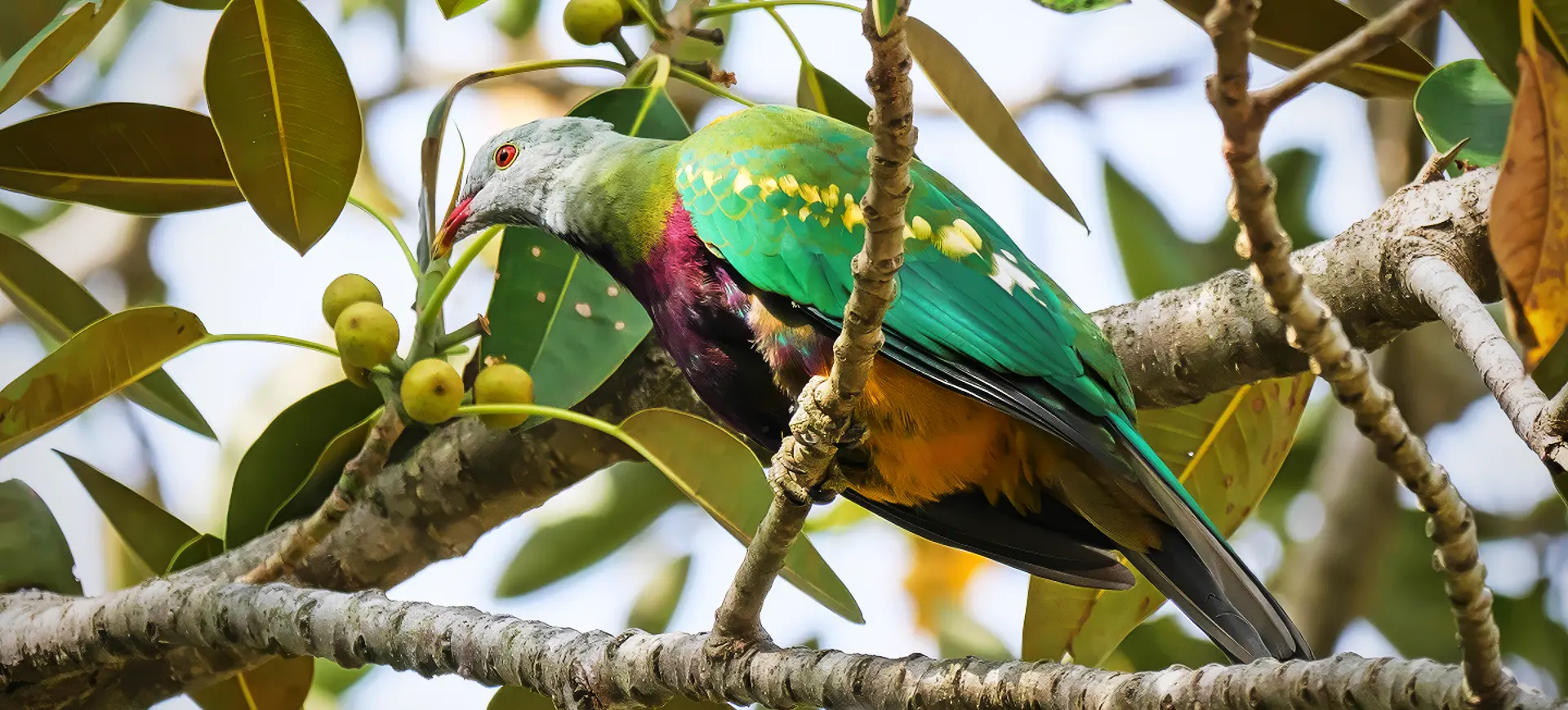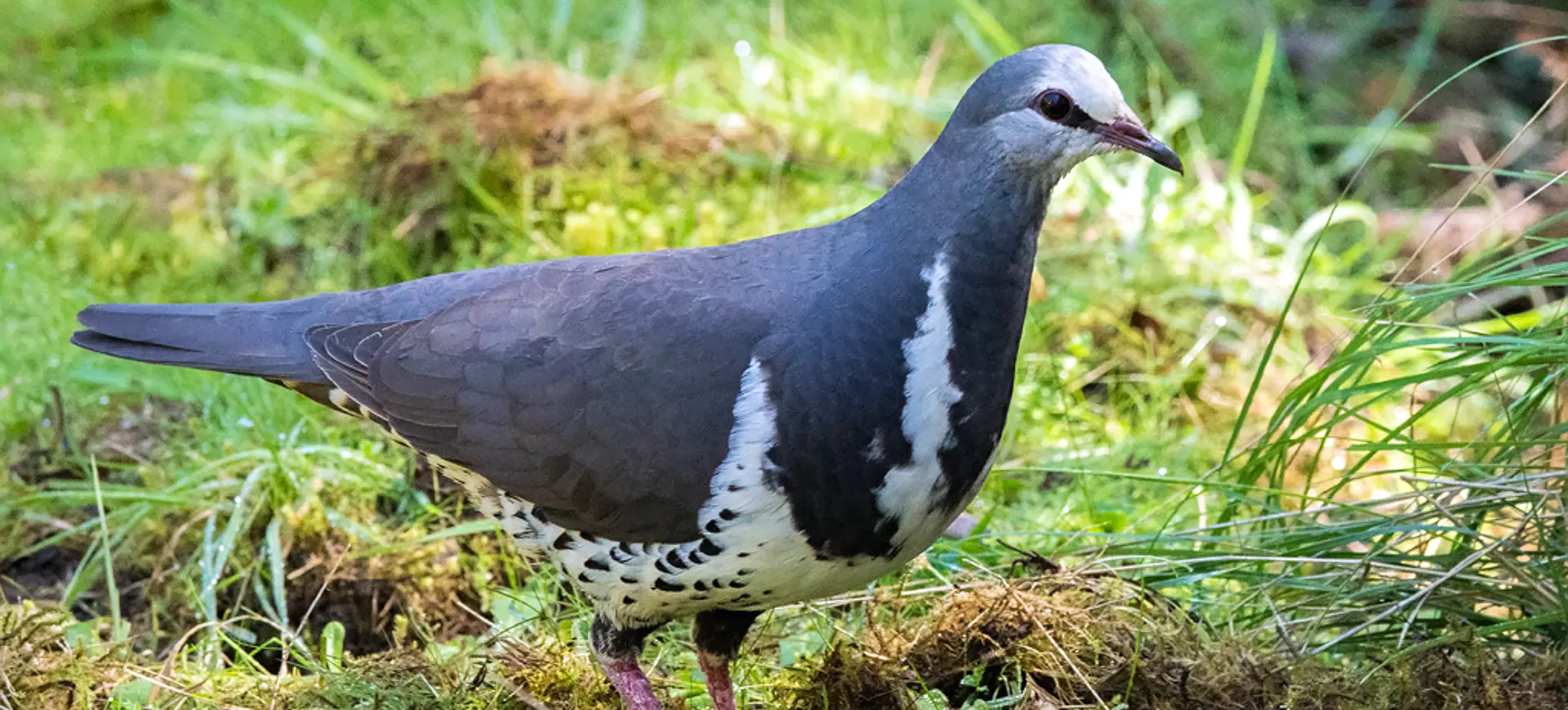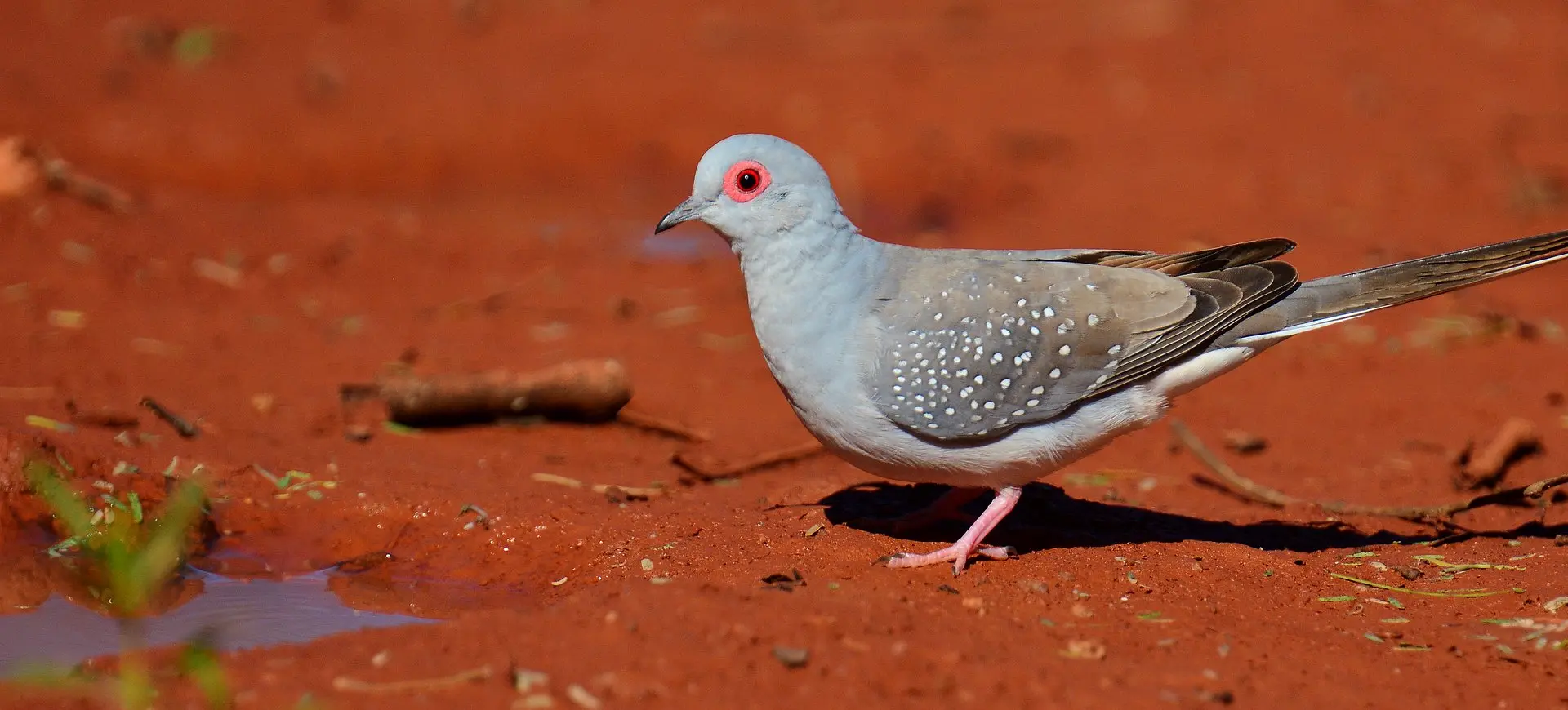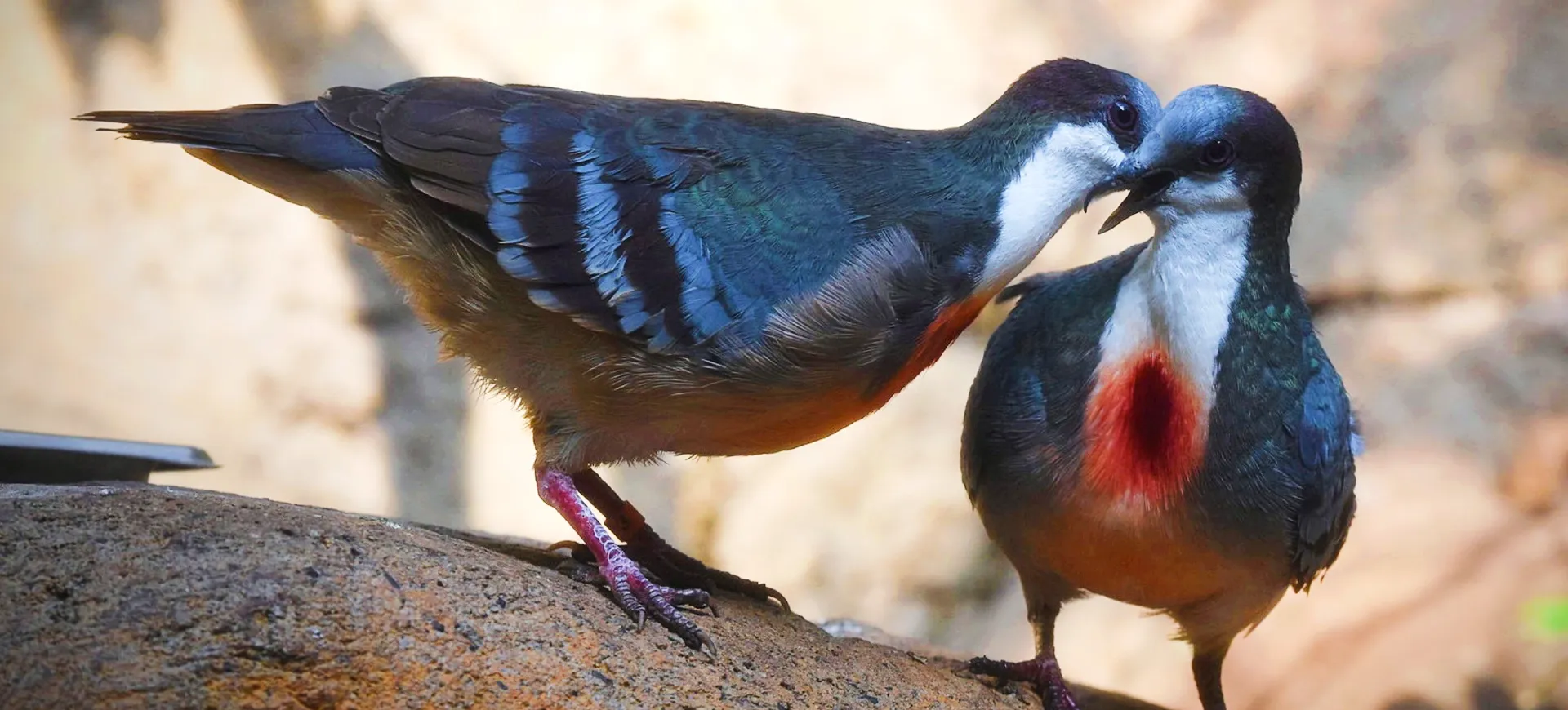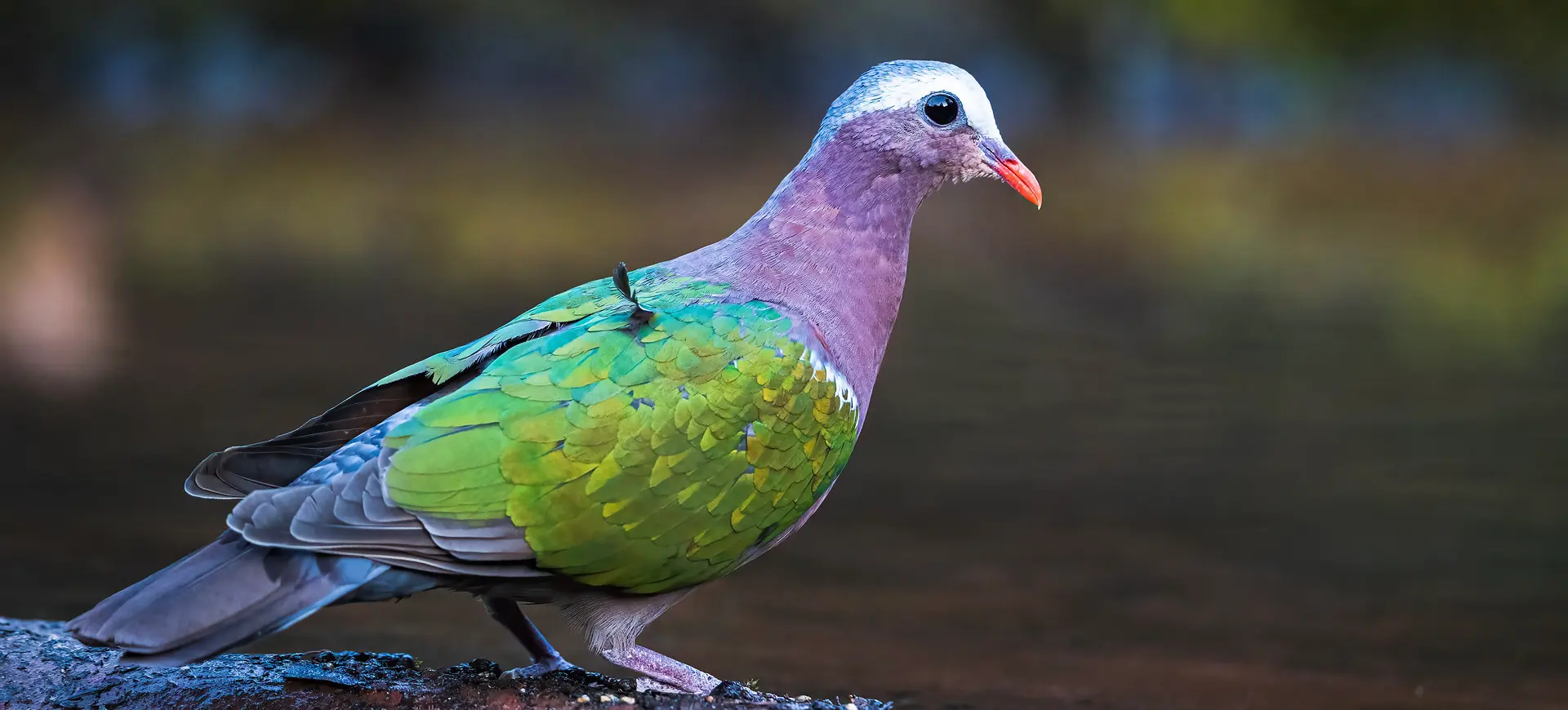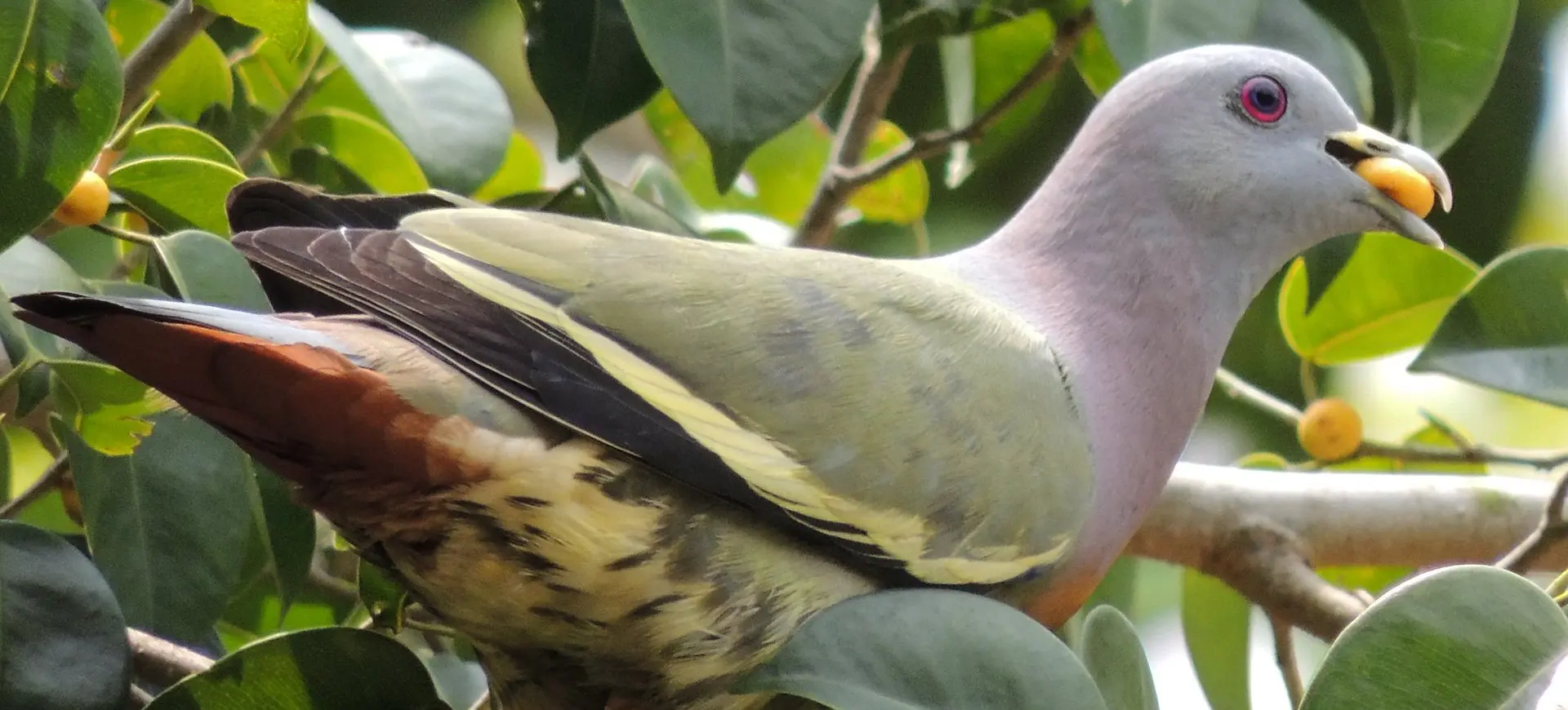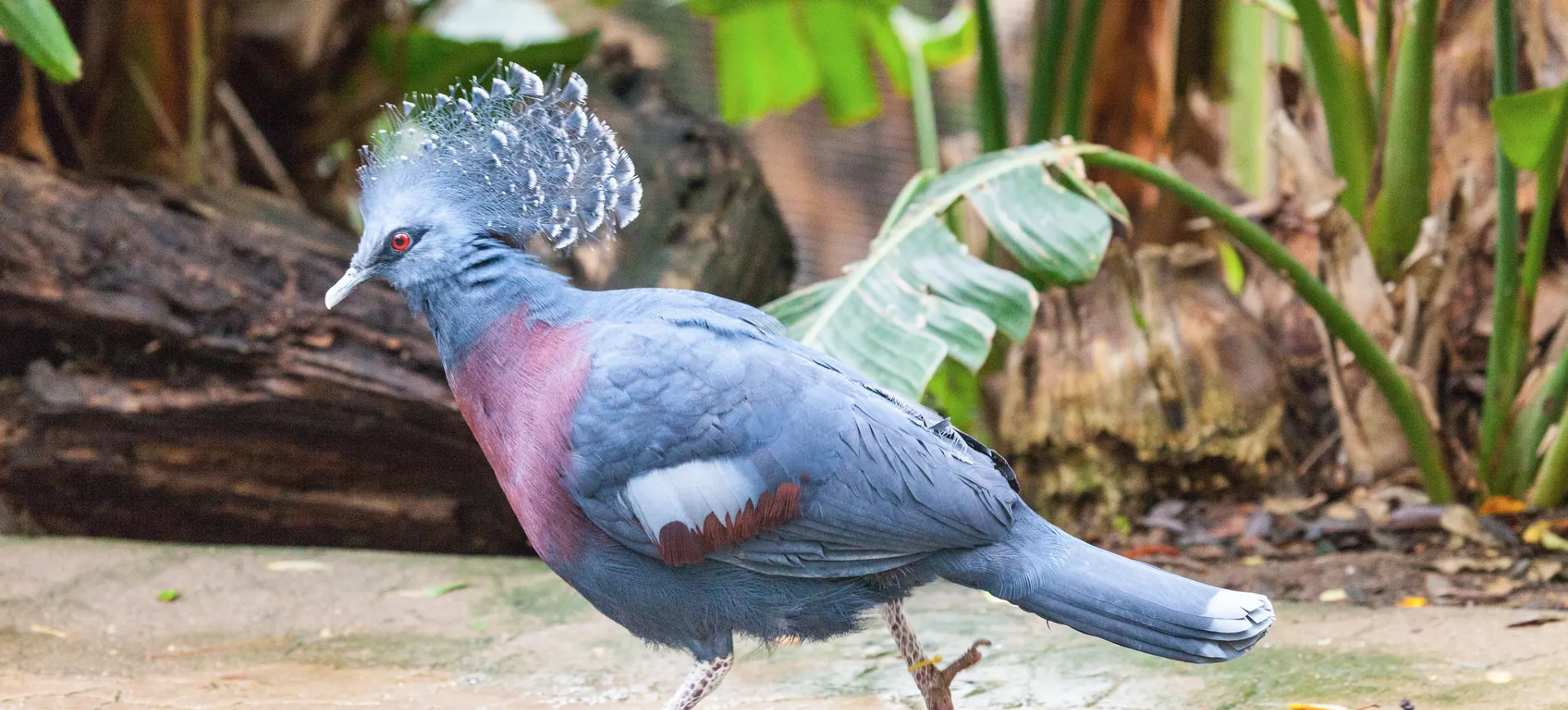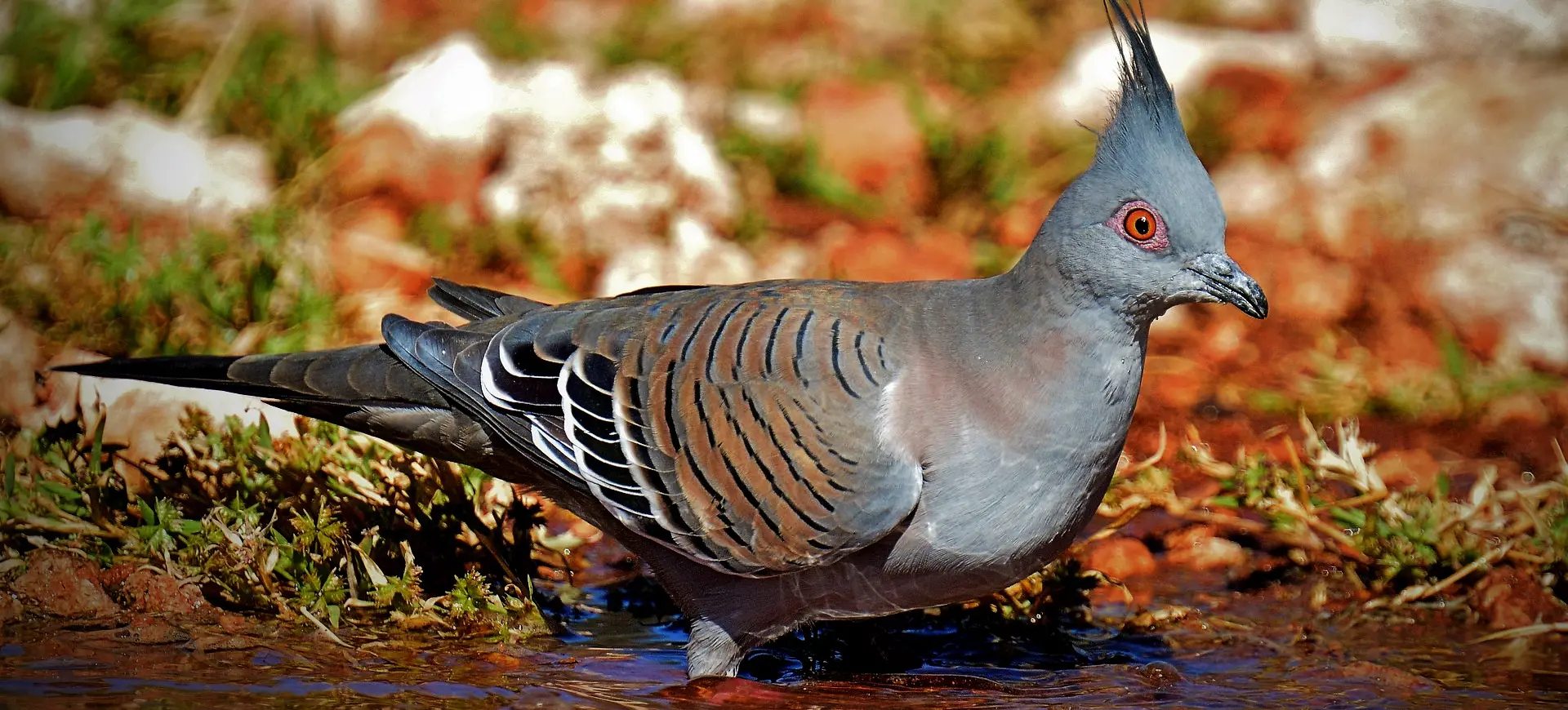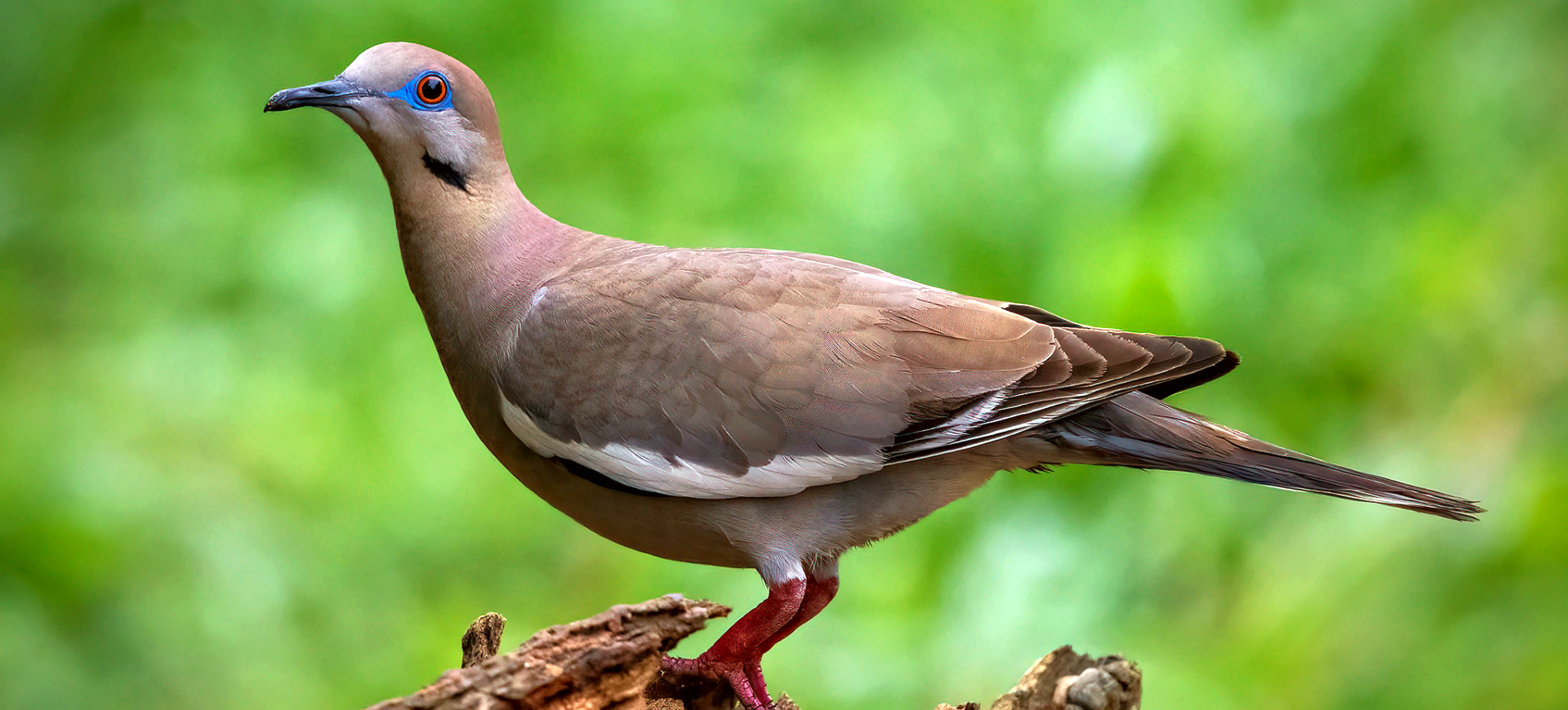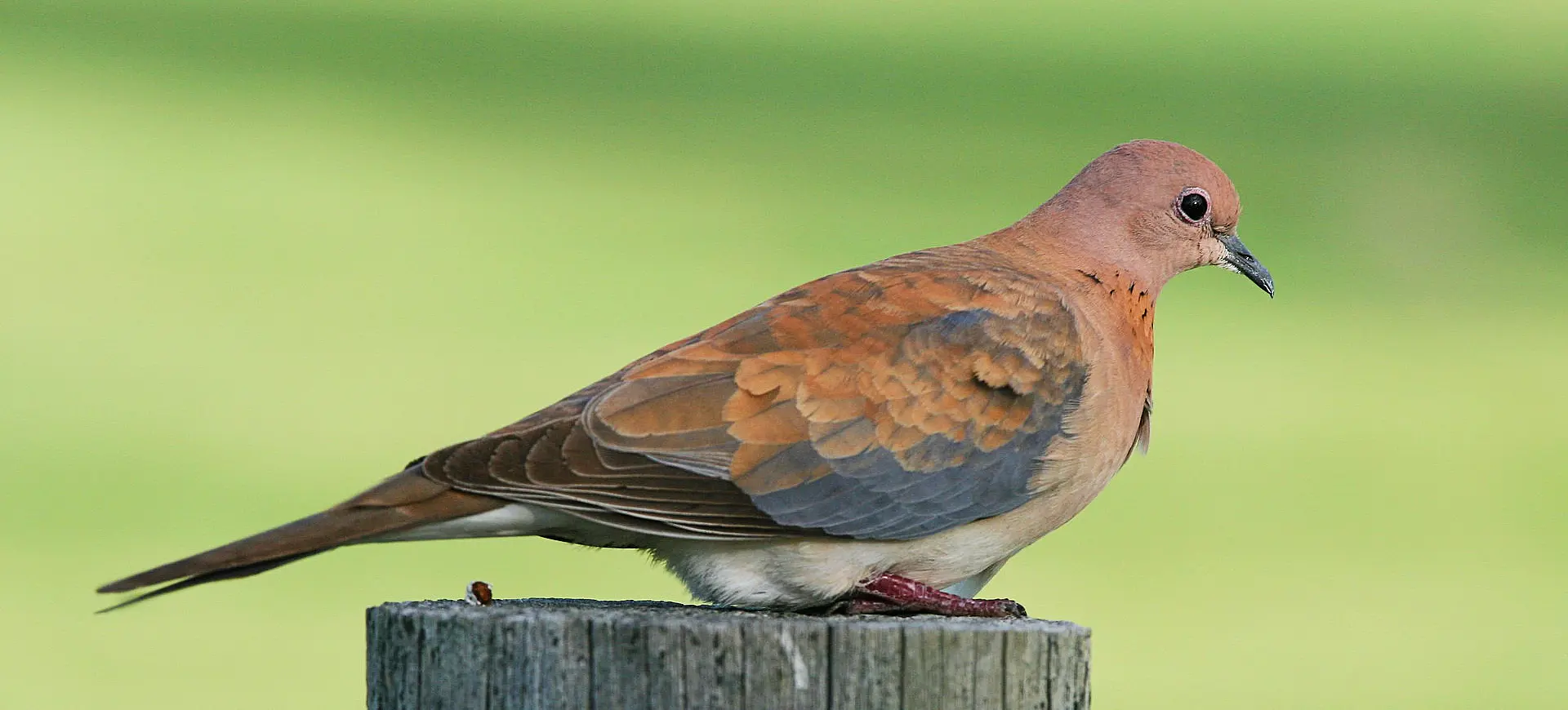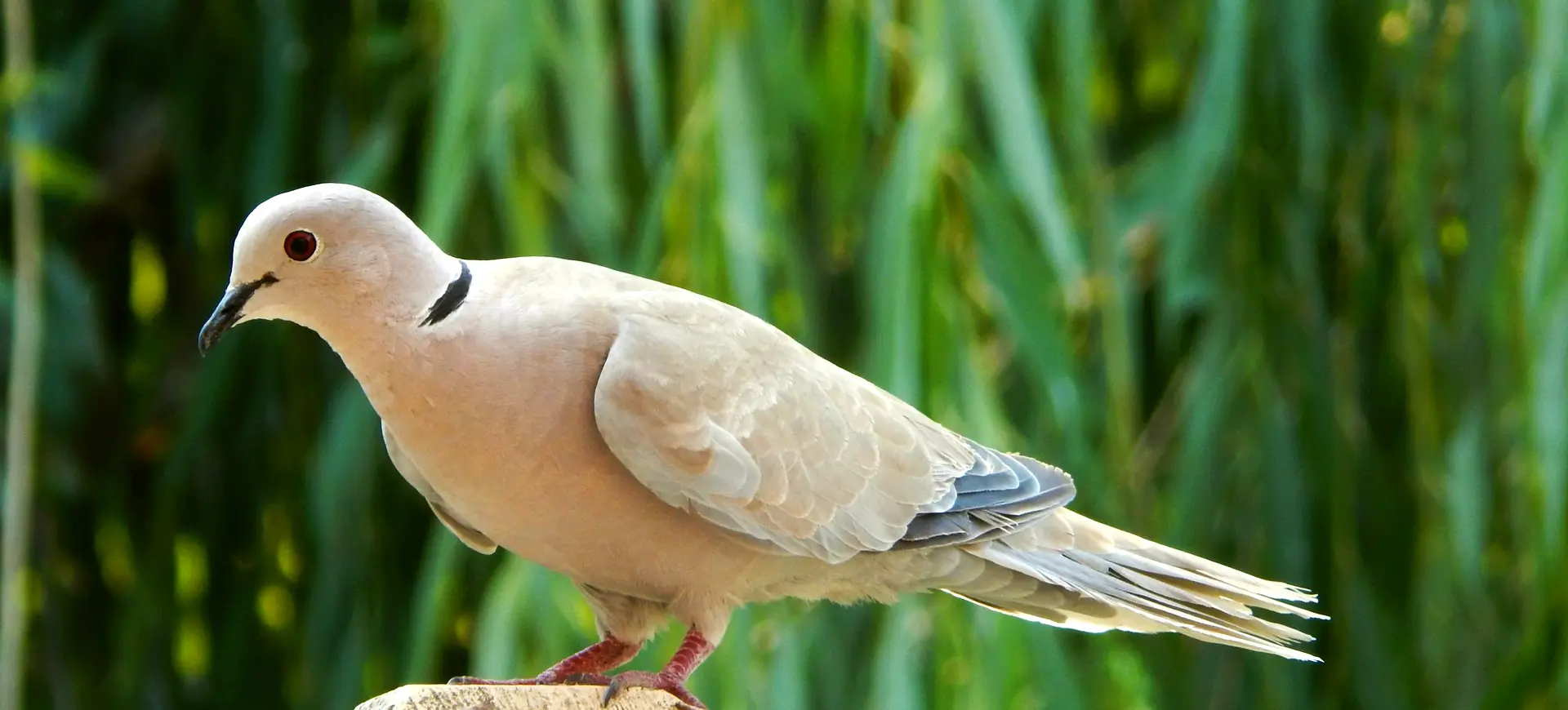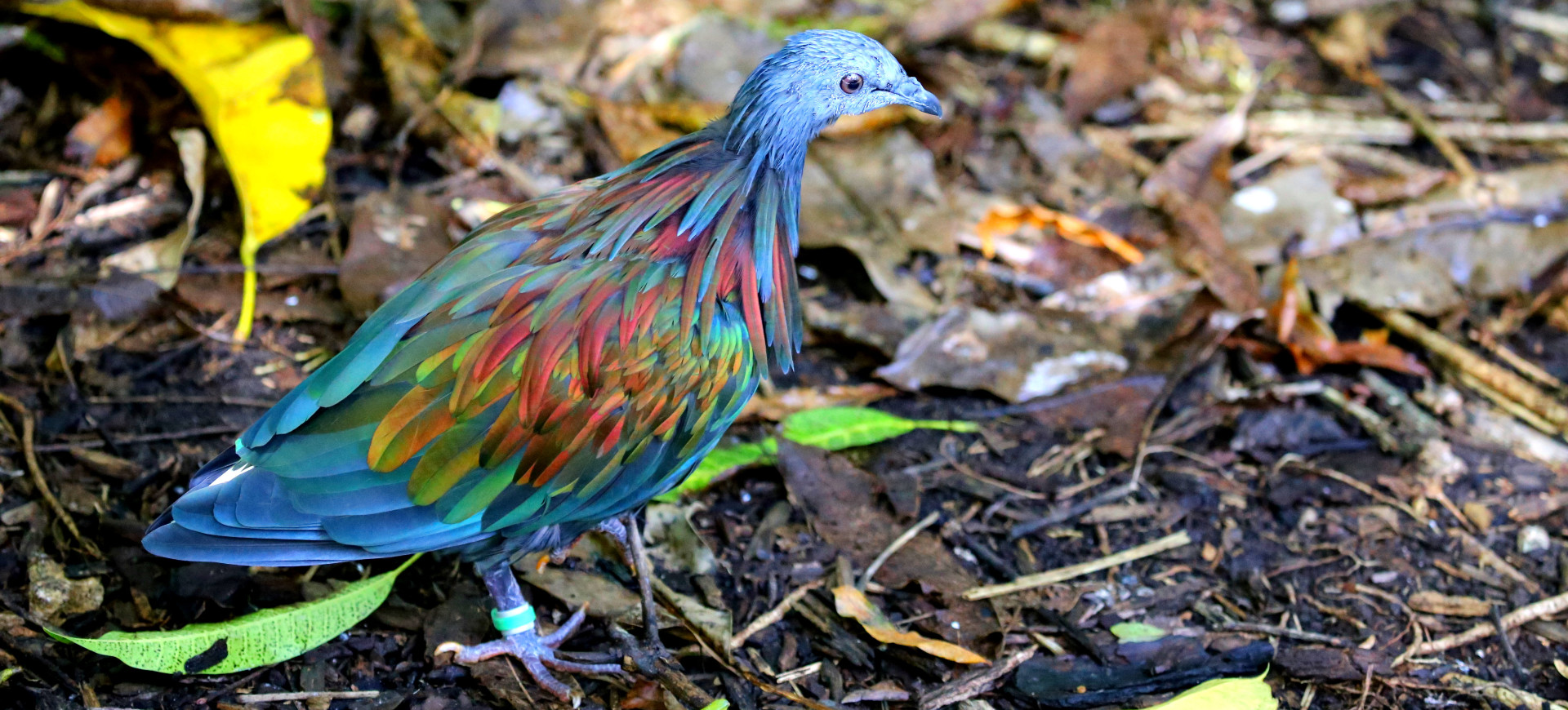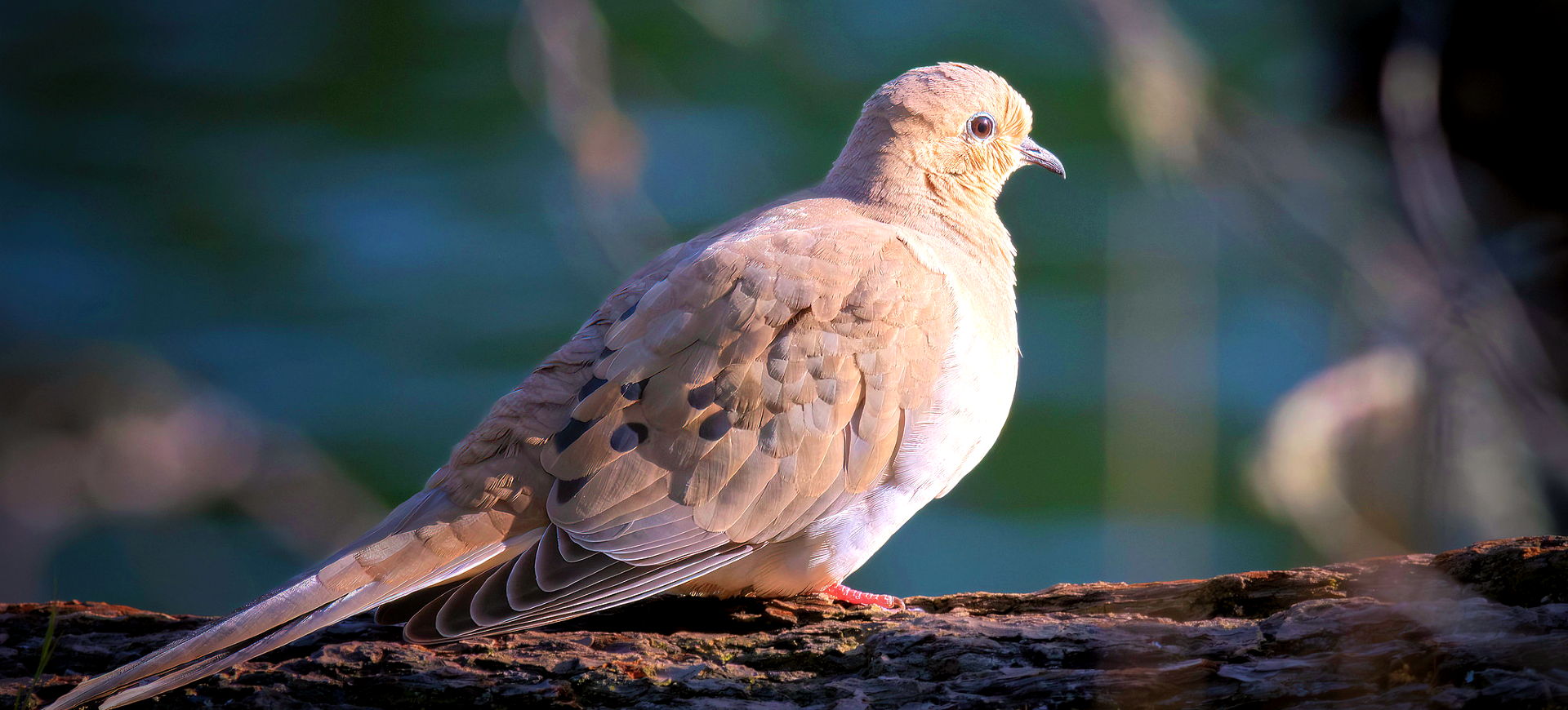Overview
The Scaled Pigeon, scientifically known as Patagioenas speciosa, is a striking bird species found primarily in the Neotropics. It is distinguished by its colorful plumage, which includes a mix of rich browns and lighter, scale-like patterns across its body. This species inhabits various forested environments ranging from lowland moist forests to montane regions. As a medium-sized pigeon, it plays a specific role in its ecosystem, particularly in seed dispersal due to its frugivorous diet.
The Scaled Pigeon is typically solitary or found in pairs, though it occasionally gathers in small flocks in fruiting trees. Its call is a deep, resonant cooing that adds a unique acoustic layer to its habitat. Despite its broad range, the species tends to be elusive, often hidden among dense foliage. It is less commonly seen than other pigeons due to its preference for staying within the forest canopy.
The scaled Pigeon’s conservation status varies by location, but it is generally considered to be of least concern, though habitat destruction poses a threat to its populations in some areas. The species’ adaptability to varying altitudes and forest types has helped it maintain stable numbers in suitable habitats. However, ongoing deforestation and land conversion for agriculture are concerns for the long-term viability of its populations.
Taxonomy
Kingdom
Phylum
Class
Order
Family
Genus
Species
Type
Current distribution:
Scaled Pigeons have a relatively broad distribution throughout the tropical regions of the Americas. They are found in southern Mexico, Central America, and northern and central South America. Their presence extends through various countries, including Costa Rica, Panama, Colombia, Venezuela, and Ecuador, reaching as far south as Bolivia.
In each of these regions, their populations are generally stable where the habitat is intact but can be localized and fragmented where forest cover has been significantly reduced. The Scaled Pigeon's adaptability to different forest types has helped it maintain a presence even in some secondary forests. Still, ongoing deforestation is a constant threat to their stability and range.
Physical Description:
The Scaled Pigeon is noted for its unique feather pattern, which resembles scales, particularly around the neck and chest. These scales are generally darker, providing a beautiful contrast against the lighter, chestnut-colored body. The bird’s eyes are surrounded by a thin, pale ring, which adds to its distinctive appearance. Adults typically exhibit a robust body, strong wings, and a short, rounded tail, which is characteristic of many pigeons.
Size-wise, the Scaled Pigeon is larger than many other pigeon species, but not excessively so. Males and females are similar in size and coloration, which makes sexing based on appearance difficult without closer observation or auditory cues. These birds can vary in terms of physical dimensions, but they generally maintain proportions typical for forest-dwelling pigeons, aiding in agile flight through dense forests.

Lifespan: Wild: ~6 Years || Captivity: ~10 Years

Weight: Male & Female: 7.2-8.4 oz (204-238 g)

Length: Male & Female: 12-13.8 in (30.5-35 cm)

Top Speed: 50 mph (80 km/h)
Characteristic:
Native Habitat:
Scaled Pigeons are native to a wide range of forested habitats in Central and South America. Their adaptability has allowed them to thrive through the Amazon Basin from southern Mexico. They prefer dense canopy cover areas that provide protection and abundant food sources. The altitudinal range of their habitat varies, with some populations living at sea level and others in montane forests.
Their habitat preferences include primary and secondary forests, indicating a degree of adaptability to human-altered landscapes, provided that sufficient tree cover remains. However, the Scaled Pigeon avoids heavily degraded areas and open landscapes, showing a clear preference for undisturbed or minimally disturbed forest environments. This reliance on forest habitats makes them vulnerable to extensive deforestation and habitat fragmentation.
Biomes:
Biogeographical Realms:
Continents:
Diet:
Diet & Feeding Habits:
Scaled Pigeons are primarily frugivores, with their diet consisting largely of fruits from various forest trees. They play an essential role in their ecosystem as seed dispersers, helping to maintain the health and propagation of tropical forests. Depending on fruit availability, the species has adapted to forage in the canopy and sometimes on the ground. This feeding behavior flexibility helps them survive in various forest types and conditions.
In addition to wild fruits, the Scaled Pigeon occasionally consumes seeds, nuts, and very small invertebrates, providing a varied diet supporting health and breeding. They are particularly attracted to fruiting trees during peak seasons, where they can be observed feeding voraciously. Their feeding habits and the locations they choose are crucial for regenerating many tree species whose seeds they help disperse.
Mating Behavior:
Mating Description:
The scaled pigeon’s mating system is predominantly monogamous, with pairs forming strong bonds that often last multiple breeding seasons. During the breeding season, males perform elaborate displays, including loud cooing calls and visual displays, such as flapping flights. These behaviors are intended to attract females and deter rivals, playing a crucial role in mate selection and territorial defense.
Nesting occurs in trees, where the female lays one to two eggs. Both parents share in the incubation and feeding of the young, which is typical of many pigeon species. The breeding season timing can vary geographically, but it generally coincides with the rainy season, which ensures the availability of ample food resources for the growing chicks. The care from both parents ensures a higher survival rate for the offspring in the vulnerable early stages of life.
Reproduction Season:
Birth Type:
Pregnancy Duration:
Female Name:
Male Name:
Baby Name:
Social Structure Description:
Scaled Pigeons exhibit a somewhat solitary behavior, with individuals or pairs typically seen apart from others except in areas with abundant food resources, where loose aggregations can form. This social structure allows them to efficiently exploit food resources without significant competition. During the breeding season, pairs become more territorial, defending their nesting sites against intruders with aggressive displays and vocalizations.
While not as complex as those of some social bird species, scaled pigeons’ social interactions are crucial for their survival and breeding success. Their ability to form stable pair bonds and cooperate in chick-rearing gives their offspring a higher chance of survival. The structure of their social interactions reflects their adaptation to life in a forested environment where resources can be patchily distributed.
Groups:
Conservation Status:
Population Trend:
While not quantified, the Scaled Pigeon population is believed to be stable in regions with intact forest habitats. They are less visible and less studied than other pigeon species, sometimes leading to underestimation of their numbers in the wild. In areas where forest cover remains extensive, and conservation efforts are active, populations are likely more secure and capable of sustaining themselves.
Threats to their populations primarily include habitat loss due to deforestation for agriculture and urban development. In some regions, hunting for food and sport also risks their numbers. The resilience of the Scaled Pigeon to varying environmental conditions helps buffer some of these impacts, but they are not immune to severe habitat fragmentation or loss.
Population Threats:
Habitat loss is the principal threat facing the Scaled Pigeon, particularly from deforestation and land conversion for agriculture and urban expansion. These activities diminish the available habitat, reduce food sources, and fragment populations, making it difficult for individuals to find mates and maintain genetic diversity. In some areas, selective logging and removing fruit-bearing trees directly affect their food availability and nesting sites.
In addition to habitat destruction, hunting for meat and capture for the pet trade in some areas also pose significant threats to local populations. Although not generally targeted on a large scale, hunting pressure can significantly impact population sizes in some localities. The legal protection of forests and enforcement of hunting laws are crucial for conserving this species.
Conservation Efforts:
Conservation efforts for the Scaled Pigeon include habitat preservation and the establishment of protected areas that encompass significant portions of their natural range. These initiatives aim to safeguard primary and secondary forests that are critical for survival. Education and local community involvement are also key components, helping to reduce hunting pressures and increase awareness of the species’ ecological importance.
Reforestation projects and sustainable land-use practices are promoted in regions where deforestation has impacted pigeon populations. These efforts aim to enhance the ecological corridors necessary for pigeon population movement and genetic diversity by restoring and connecting fragmented habitats. Continued research and monitoring are essential to assess these conservation strategies’ effectiveness and adapt them as necessary.
Additional Resources:
Fun Facts
- Scaled Pigeons are named for the scale-like feather pattern on their necks and chests.
- They can consume large fruits whole, regurgitating the seeds far from the parent tree.
- Despite their broad range, Scaled Pigeons are often overlooked in avian surveys due to their elusive nature.
- They are known for their deep, resonant cooing sounds, which can be heard across the forest.
- The plumage of the Scaled Pigeon provides excellent camouflage against the forest canopy.
- Unlike many other pigeon species, they are uncommon in urban areas.
- Scaled Pigeons have a variable breeding season closely tied to the local climate and fruit availability.
- They play a crucial role in their ecosystems as agents of seed dispersal.
- Conservation efforts for the Scaled Pigeon focus largely on habitat protection and anti-hunting measures.
- They are less affected by some diseases that commonly impact other pigeon species due to their isolated and forest-bound lifestyle.

